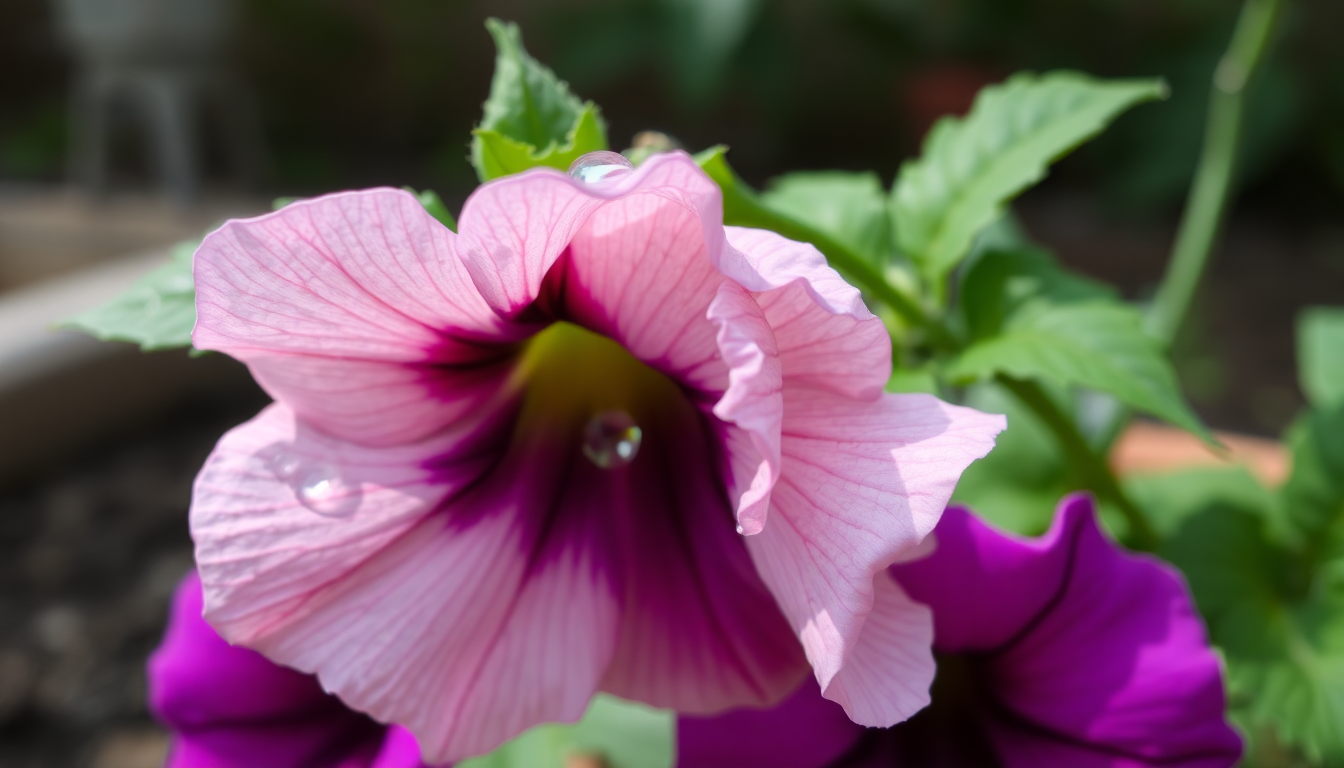As a passionate gardener, there's nothing more frustrating than seeing your beloved petunias wilt, despite your best efforts to keep them hydrated. Petunias are a popular choice for adding vibrant color and cascading beauty to gardens, patios, and balconies, but they can be finicky when it comes to their watering needs. If you're scratching your head, wondering why your petunias are wilting despite regular watering, you're not alone.
In this comprehensive guide, we'll delve into the common causes of petunia wilting and provide you with practical solutions to revive your plants and keep them thriving throughout the growing season.
Understanding Petunia Watering Needs
Petunias are generally considered moderate water-users, requiring consistent moisture to maintain their lush foliage and vibrant blooms. However, their water needs can vary depending on several factors, including:
Soil Composition
Petunias prefer well-draining, nutrient-rich soil that retains moisture without becoming waterlogged. Heavy, clay-based soils or compacted soil can impede proper drainage, leading to root rot and wilting.
Weather Conditions
Hot, dry, and windy weather can cause petunias to lose moisture more quickly, leading to wilting. Conversely, cool, cloudy days may require less frequent watering.
Container Size
Petunias grown in small containers have a more limited root system and can dry out faster than those planted in larger pots or garden beds.
Sunlight Exposure
Petunias thrive in full sun, but intense direct sunlight can also contribute to rapid moisture loss and wilting, especially during the hottest parts of the day.
To ensure your petunias receive the right amount of water, it's essential to monitor the soil moisture regularly and adjust your watering schedule accordingly.
Common Causes of Petunia Wilting
Now that we've covered the basics of petunia watering needs, let's explore the most common reasons why your petunias may be wilting despite your best efforts.
Overwatering
Believe it or not, too much water can be just as detrimental to petunias as not enough. Overwatering can lead to root rot, which prevents the plant from absorbing the moisture it needs, resulting in wilting.
Underwatering
If the soil around your petunias becomes too dry, the plants will start to wilt as they struggle to draw up enough moisture from the parched soil.
Root Damage
Pests, such as root-feeding insects or diseases, can damage the plant's root system, impairing its ability to absorb water and nutrients, leading to wilting.
Temperature Stress
Extreme temperatures, either too hot or too cold, can cause petunias to go into shock, leading to wilting as a defense mechanism.
Nutrient Deficiencies
Lack of essential nutrients, such as nitrogen, phosphorus, or potassium, can also contribute to petunia wilting, as the plants struggle to maintain healthy growth.
Reviving Wilting Petunias
Now that we've identified the potential causes of petunia wilting, let's explore the steps you can take to revive your plants and keep them thriving.
Assess Soil Moisture
Use your finger or a soil moisture meter to check the soil around your petunias. If the soil is dry, water the plants deeply, ensuring the water reaches the root zone. If the soil is waterlogged, allow it to partially dry out before watering again.
Adjust Watering Frequency
Establish a consistent watering schedule that takes into account the factors mentioned earlier, such as soil type, container size, and weather conditions. Aim to keep the soil consistently moist, but not waterlogged.
Improve Soil Drainage
If your petunias are planted in heavy, clay-based soil, consider amending the soil with compost or other organic matter to improve drainage and aeration.
Protect from Temperature Extremes
Provide shade or shelter for your petunias during the hottest parts of the day, and consider moving container-grown plants to a more sheltered location if necessary.
Fertilize Appropriately
Apply a balanced, water-soluble fertilizer formulated for flowering plants to ensure your petunias are receiving the necessary nutrients for healthy growth and bloom production.
Inspect for Pests and Diseases
Carefully examine your petunias for signs of pests or diseases that may be damaging the root system or foliage. Treat any issues promptly to prevent further wilting.
Prune and Deadhead
Regularly removing spent blooms and any damaged or diseased foliage can help redirect the plant's energy towards new growth and bloom production, aiding in its recovery.
By addressing the underlying causes of petunia wilting and implementing these practical solutions, you can help your plants bounce back and regain their vibrant, healthy appearance.
Remember, patience and consistent care are key when it comes to reviving wilting petunias. With a little TLC and a keen eye for their needs, you can enjoy the beautiful, cascading blooms that make petunias such a beloved addition to any garden.
Happy gardening!


0 comments